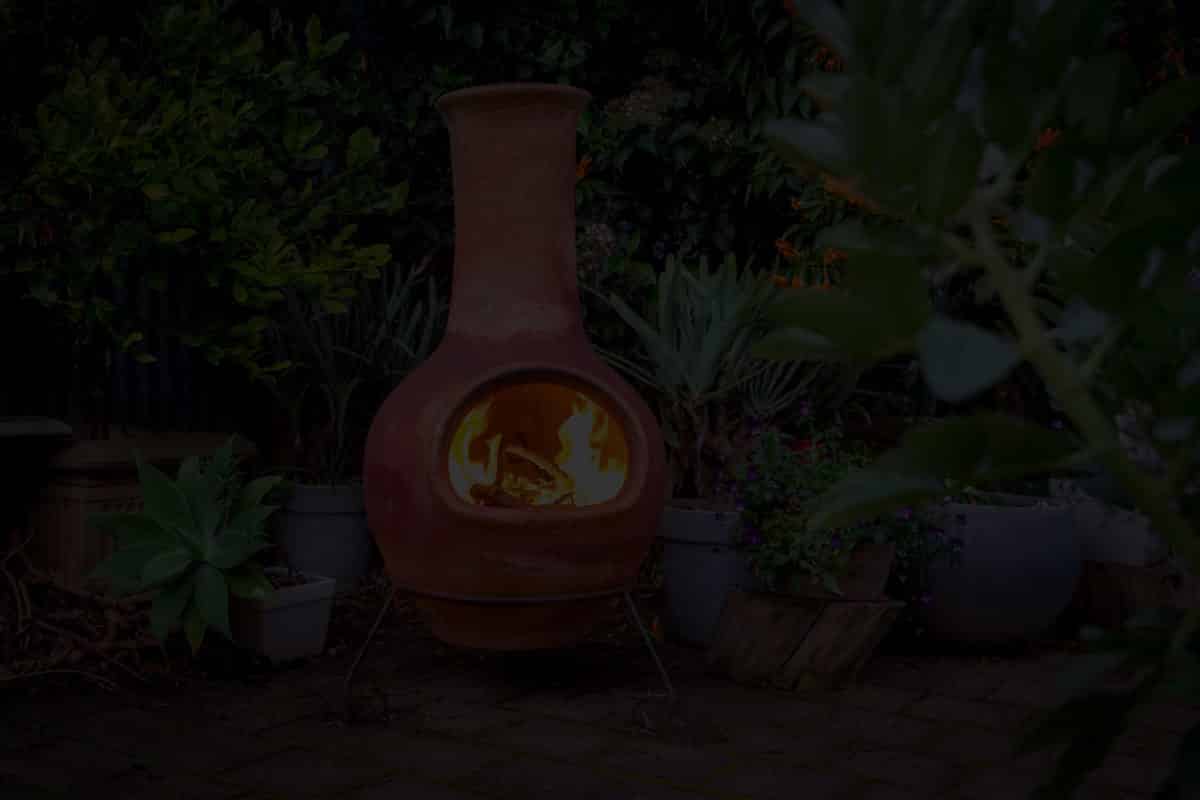Chiminea maintenance and care
Help! Expert Chiminea Troubleshooting Advice
It’s all going horribly pear shaped, and you can’t figure out what you’re doing wrong. Here are our top tips for chiminea troubleshooting, designed to help you make the most of your chim.
Chiminea troubleshooting – Top chiminea advice
Do I really need to use a lid and stand?
Oh yes. Whatever type of clay chim you have, you must raise its bottom off the ground or you risk it being weakened by water. And you need a lid to stop rain getting into the chim.
I can’t decide where to put my chiminea
You want to heat a good-sized space around your chim, so don’t stand it against a wall unless you’ve bought one of our flat-backed fires that’s designed to stand against a wall. Leave at least a metre around the chim in every direction, then you and your guests can stand and warm yourselves nicely from every angle.
Never place it too close to plants or you’ll scorch them. And beware of awnings. You might not realise just how high the heat goes – use a low awning over your chim and you can easily set it on fire. It also helps to stand a chim so the mouth faces away from the prevailing wind, which can blow the fire out if it’s strong enough.
I just can’t get a fire going…
Where is Ray Mears when you need him? Luckily there are some basic dos and don’ts around setting a good fire. The first is to add a layer of sand to the bottom of the chim, and make it deep. This helps enhance the flow of air simply by raising the fire closer to the chim’s mouth. But there’s more – it also makes the chiminea heavier and lowers its centre of gravity, which means it’s harder to knock over. And it helps protect the bottom of a clay chim from intense heat, keeping the base cooler therefore safer. Best of all, a deep sand later absorbs debris from the fire, and means you only need to clean your chim out a couple of times a year.
Also check whether you’ve put enough newspaper and kindling under the logs or charcoal to start a fire properly. Make sure you set the logs at an angle, like you do a regular bonfire, so the air can get under them and feed the flames. Whatever you do, never squirt petrol, oil or anything else flammable into your chim. You may singe your eyebrows off… or worse!
Still lost in space? Here’s a link to a YouTube video about how to light a chiminea fire.
Do I really need to set three small fires in my clay chim first?
Patience, my friend. Yes, you do. Every brand new clay chim deserves three small fires, each lasting half an hour or so, designed to create a nice build-up of soot and resin which cures the clay and makes it more resilient. You might like to do the same if your chim has been outdoors in the rain and has got very wet, since small fires steadily drive off the damp without cracking the clay.
My chiminea is smoking like mad
Is your chimney blocked, for example because you’ve mistakenly left the rain cap on? Are you using damp or unseasoned wood? Young or wet wood can give off an awful lot of smoke, which might not please your neighbours! Avoid using firelighters, which contain nasty chemicals as well as potentially damaging the clay many chimineas are made from.
Should flames be bursting out of the top?
No. This isn’t a furnace, so reel in your pyromaniac tendencies! Flames mean you have overdone the fire and it’s far took big and hot. Too much heat can crack a clay chim and change the colour faster than it would otherwise change. But don’t, whatever you do, throw water on it to cool things down. Wait until the flames have died down, and make a note not to make such an OTT conflagration next time.
Can I regulate the temperature for cooking?
Not really. But the more you use your chim, the more confident you’ll be about reducing or increasing the size of the fire so it’s the perfect temperature for whatever you want to cook. You can also raise or lower the cooking grill or pan to get much the same effect.
Can I use my chim indoors?
Chimineas are designed for outdoor use, so please don’t use yours indoors, where they come with a fire risk as well as a carbon monoxide risk.
Whoops, I’ve spotted a crack
Clay chims do sometimes crack, but it’s easy enough to mend cracks as long as they’re not too big. You can fill the gap with fire clay, which you then seal on the outside of the chim using a special Chimseal product to re-waterproof the surface. We sell everything you need to maintain your clay chim in good nick.
It’s actually wise to re-seal the outer surface of your clay chiminea with Chimseal twice a year as a matter of course, to stop water penetrating the clay.
Can I get a clay chiminea that won’t crack?
Yes. We use a very special clay, CHIMALIN-FC, eight years in development and highly unlikely to crack in the way ordinary chim clay can. Check out our special CHIMALIN-FC range.
Any more questions about chiminea troubleshooting? We know everything there is to know about chimns, so feel free to get in touch.

